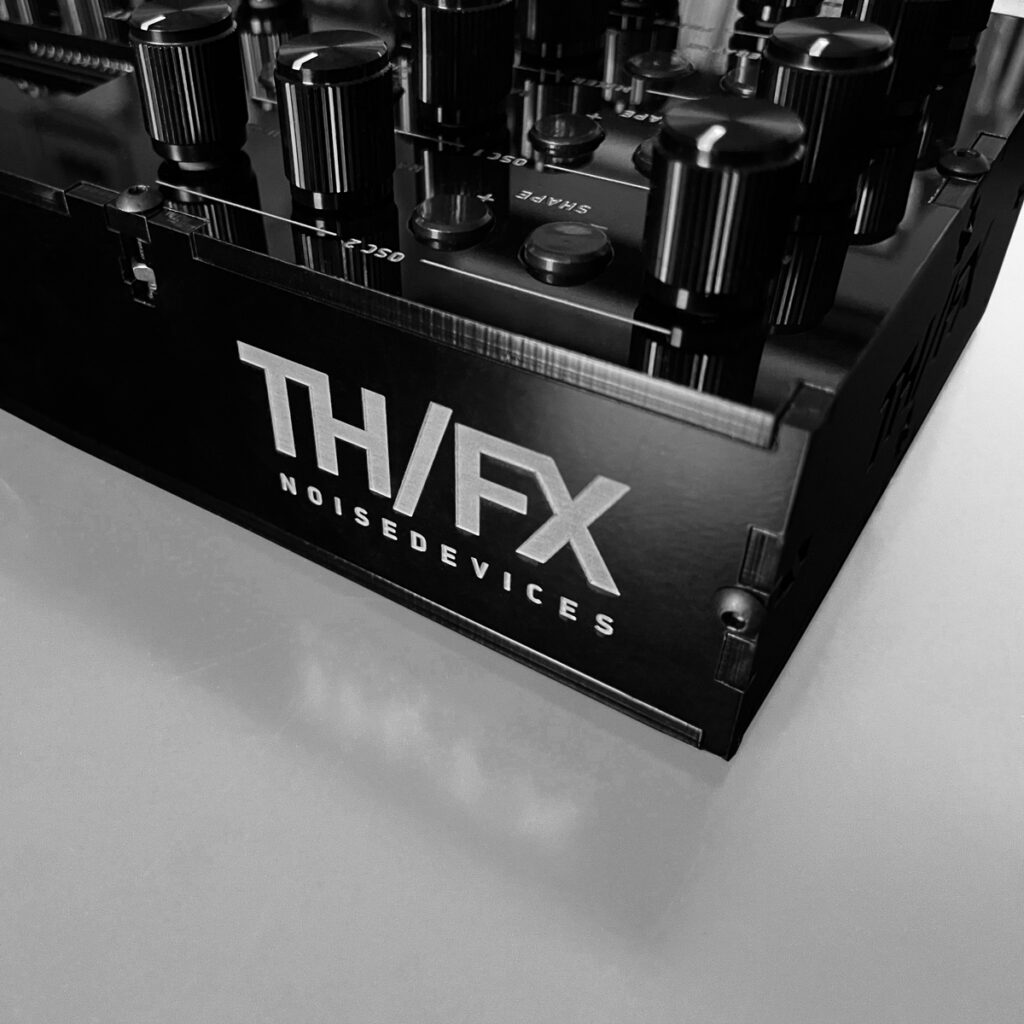SHOP: BAIKAL XT Hybrid Desktop Synthesizer
BKLD-25-A / MADE TO ORDER
BKLD-24-A / MADE TO ORDER
BKXD-22-A / Nov 15, 2022 / SOLD OUT

The BAIKAL XT is the extended version of the BAIKAL. It is a hybrid monophonic desktop synthesizer that offers the best of both analog and digital worlds.
It is designed in two halves — the main circuit board is all digital, generating various sound sources, mixing and treatment options, envelopes, LFOs, and a 16-step sequencer and arpeggiator. It is equipped with an 2/16 OLED display, an encoder pot to navigate through parameters/pages shown on the display, 4 pots to modify the synthesis parameters, and 6 push buttons to cycle between groups of related pages, to switch between the synthesis pages and the sequencer/system pages, and to load and recall presets. In addition the XT version features 25 pots and 13 push buttons for editing parameters directly.
The all analog LP2 filter plus delay board forms the second half of the BAIKAL XT. It combines a raw OTA-C 2-pole filter with a classic lo-fi delay. It contains the voltage-controlled filter and amplifier, and has the ability to treat external audio.
The TH/FX BAIKAL XT is based on the Shruthi XT synthesizer. PCB and firmware originally designed by Émilie Gillet under Creative Commons cc-by-sa 3.0 license.

ADDITIONAL BAIKAL XT SPECS
- acryl housing, glossy black, LxWxH 297x112x45mm
- DC 9V center positive input (rear panel)
- no external power supply unit included
- on/off switch (right side panel)
- Midi input (rear panel)
- Midi output (rear panel)
- 6.35mm Line-level mono audio output (rear panel)
- 6.35mm Line-level mono audio input (rear panel)
- 512kB memory chip
- 2/16 OLED display
- 1 encoder pot
- 4 synthesis parameters pots
- 6 cycle push buttons
- 25 pots for editing parameters directly
- 13 push buttons for editing parameters directly
- high quality parts
- full aluminum anodized knobs on every pot
- all electronic parts soldered by hand
- all parts RoHS compliant
See the detailed user manual here.
The TH/FX BAIKAL XT is based on the Shruthi XT synthesizer. PCB and firmware originally designed by Émilie Gillet under Creative Commons cc-by-sa 3.0 license.
DOWNLOADS
Was ist was? (Beileger, DE)
What is what? (Supplement, EN)
Produktsicherheitsblatt (DE)
Product Safety Sheet (EN)
